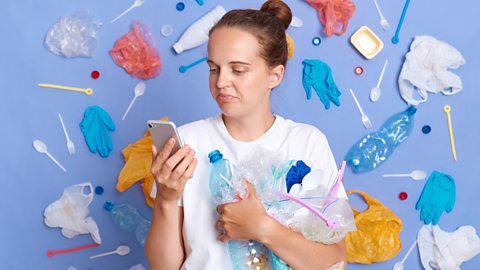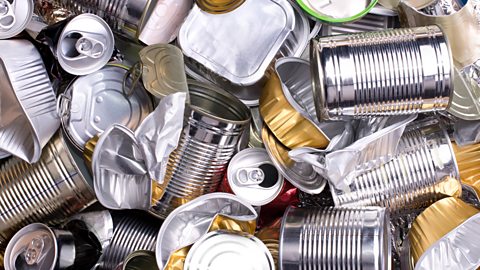What can and can’t be recycled from your food shop?
How much of the contents of your recycling bin are you 100% sure can be recycled?
By Fliss Freeborn

Is it time for the annual spring clean? A time when you go beyond your daily and weekly chores to get to those hidden – and forgotten – parts of your home. The old jars at the back of the fridge, the numerous food shopping bags cluttering up drawers, and the unopened cans of food sitting in your kitchen cupboard that are long-beyond their use by date.
You are probably hoping to stick most of those into your recycling boxes. But what can go in and what might be ‘wishcycling’?
‘Wishcyling’ is the common practice of adding items to the recycling, hoping, rather than knowing, that they can be recycled. And if you do try to recycle coffee cups or cat food pouches with your household waste (you can’t), you aren’t alone.
According to research, 8 out of 10 households are still unclear on how to recycle correctly .
Steve Flannery, senior vice president at materials science and packaging company Avery Dennison says, “The lack of standards and standardisation of recycling processes is probably the biggest hurdle to reaching high recycling rates. A lack of consistency in plastic packaging composition and messaging around recycling practice is causing confusion among consumers, spurring on chronically low recycling rates.”
What can and can’t be recycled?
Among the many urban myths around recycling, one fact is safely accepted: clean it, don’t contaminate it. Whatever goes into the bin needs to have a wash or rinse to remove any contaminating food waste.
For the most widely accepted materials, here are more ways to ensure your food packaging waste doesn’t get diverted into landfill.
Paper and card
Normal printer paper, magazines and newspapers are widely recycled, plus promotional materials like takeaway leaflets and weekend food magazines.
Card, such as cereal boxes, is also accepted – though it should always be flattened for collection. Egg boxes are good for recycling too.
But all paper and card has to be clean of food residue. If your cardboard or paper has grease on it – unavoidable in pizza or fish and chip boxes – put it in the bin.
If plastic-lined or waxed, it’s also unsuitable for recycling. The same goes for paper plates, sandwich boxes and bakery bags that have signs of food contamination.
Baking paper is not recyclable because of its silicone coating and should go in the general waste bin. Kitchen towel is also not recyclable, but welcome in a food waste bin if you have one.
Paper takeaway cups are not recyclable, though some coffee shops have switched to biodegradable or compostable versions.
Bennett highlights another unexpected oddity in non-recyclable paper: till receipts. “The ones printed on shiny, thermal paper are not recyclable because they have a chemical coating that is harmful if released into the environment.” Opt out of a receipt if you don’t need one.
Glass
Bottles and jars are easily recycled. However, broken drinking glasses and old lightbulbs can’t be added into the mix. Neither can glass cookware products such as Pyrex dishes.
“This is because they are heat-treated so do not melt at the same temperature as other glass items,” says Bennett.
How to recycle lids for glass jars and bottles is still a grey area. Some councils ask that lids be put into bins separately, some prefer them to be kept on jars, some don’t recycle them at all. Check your council recycling site for details.
Give your glass jars and bottles a good rinse before adding them to the bin. Anything that might contaminate the end product will be put into landfill, or worse, contaminate other items, potentially causing it all to be ditched. For the sake of a 30-second wash you can feel assured yours won’t be a problem.
These recipes will all help you use up those half-empty glass jars

Metal
Food and drink cans are one of the most straightforward things to recycle. They’re easily melted down and the material can then be reused for a number of applications without any compromise on quality.
According to WRAP (the Waste and Resources Action Programme) you needn’t remove the label from your tin cans as this will be separated during processing.
Bennett adds: “Aluminium takeaway food containers can be recycled but give them a wash first. Clean aluminium foil can also be recycled with your cans.”
But metallic products like baby food pouches, coffee packaging, squeezy yoghurt pouches and other plastic-coated products such as crisp packets are currently a no-go, as they’re made of a mix of materials which are difficult to separate in the recycling process.
Use those long-forgotten tins with these recipes

Plastics
Most councils will take milk bottles, plastic drinks bottles, shampoo, conditioner, detergent and soap bottles (without pumps). Plastics need to be cleaned as they will contaminate other recyclable waste in the same bin, rendering it useless. Keep lids on, otherwise they may get filtered out because they are too small.
And here’s where it gets tricky, says packaging consultancy, Root: “Some local authorities or councils treat the following items differently: Tetrapak drink cartons, plastic pots, tubs and trays, carrier bags, crisp packets, sweet wrappers and food waste.”
While plastic pots, tubs and trays are usually recyclable, this often doesn’t include black plastic or thin punnets used to sell soft fruit.
Soft plastics, which include anything film-like or lightweight, such as salad bags, soft fruit punnets, clingfilm, bubble wrap, cheese wrappers, juice pouches, bread bags and chocolate bar wrappers, aren’t currently mandated for kerbside collection. But large supermarkets often do collect some of these items for recycling.
Polystyrene food packaging is not recyclable at all.
The best you can do is to check your local waste collection website to determine what will be collected and what might need to be specially recycled. The UK government aims to improve recycling rates by requiring clear labelling on all plastic packaging by 2027, which should help.

Reduce and reuse first, then recycle
As consumers, however, the biggest thing we can do is to become more conscious of reducing our waste in the first place and prioritise reusable items to avoid putting things in any type of bin.
Food packaging can play a vital role in keeping food from spoiling and avoiding food waste is a hugely important part of reducing our carbon footprint. However, where you can, choose loose produce over plastic nets (citrus fruit, garlic, onions) or plastic bags (bananas, apples). Buying loose produce also helps reduce food waste as you only buy what you need.
Some supermarkets offer a selection of refillable packaging-free goods such as pasta, cereal, legumes and laundry detergent, and there are plans to roll these schemes out further. To incentivise sales, the majority of these schemes will see goods price matched or cheaper than their wrapped equivalents, so keep your old plastic takeaway containers at the ready.
Related stories
- The one change experts say would stop food waste
- Can you really have a plastic-free kitchen?
- Apps to help you cut food waste and save cash
Originally published June 2023. Updated March 2024
